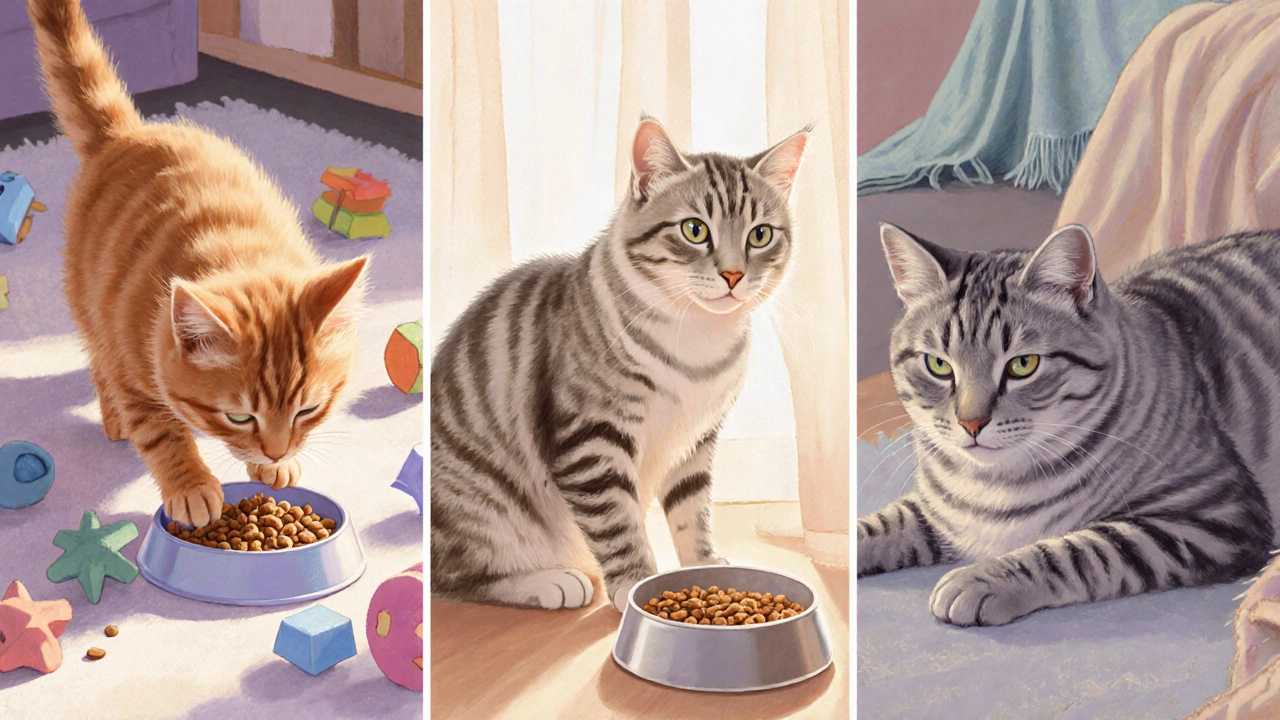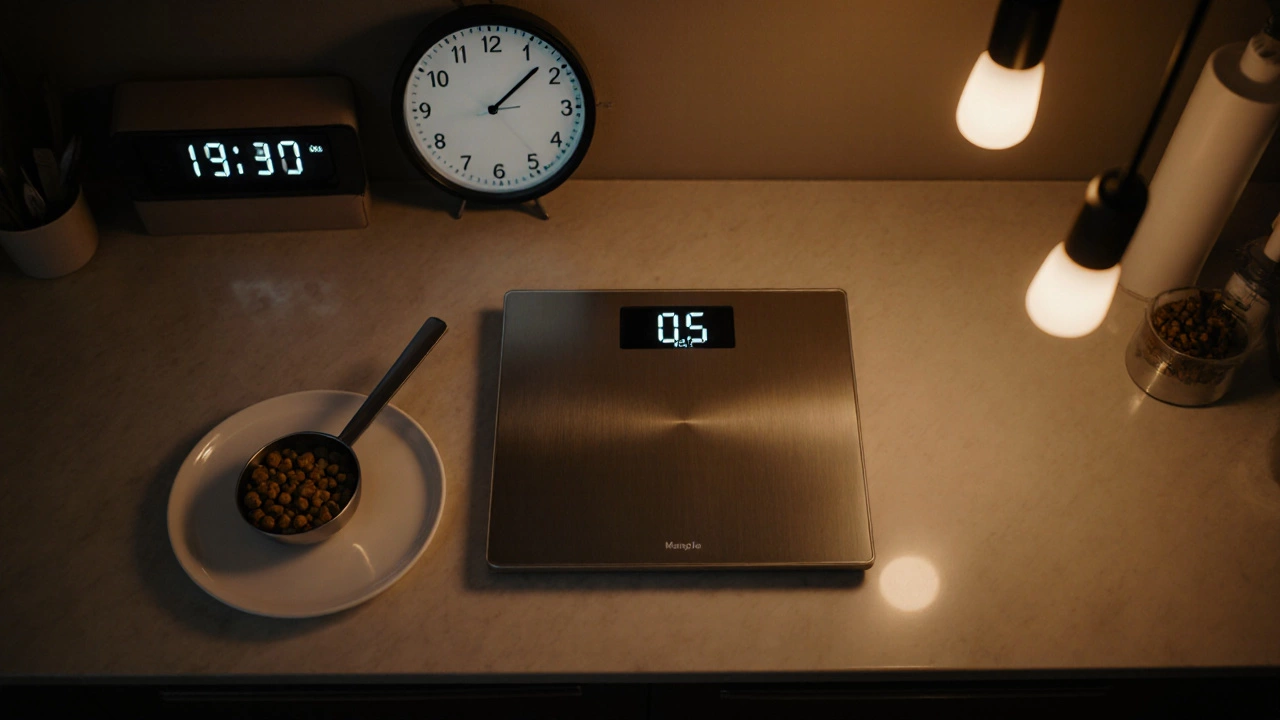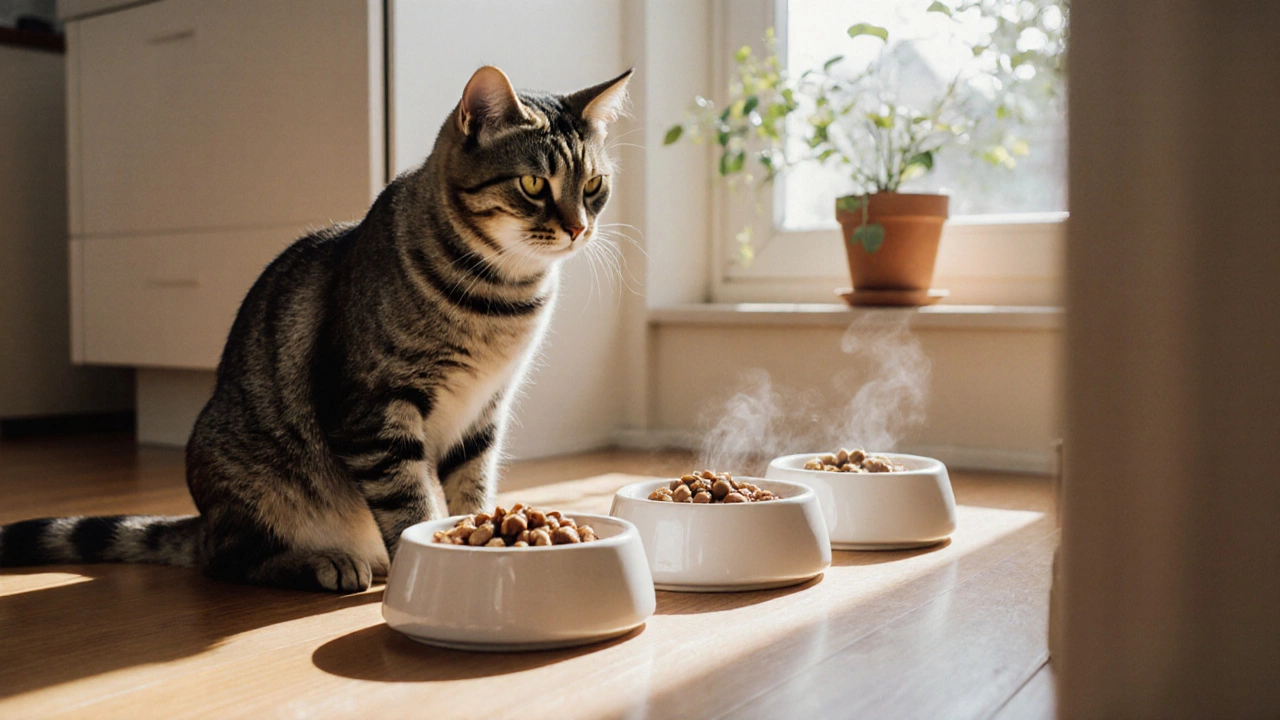Cat Feeding Calculator
Calculate Your Cat's Perfect Feeding Schedule
Enter your cat's details to determine optimal daily calories, meal frequency, and portion sizes.
When it comes to Feeding a cat is a daily routine that provides essential nutrients, energy, and comfort, the biggest question most owners face is timing. Too few meals can leave a cat hungry and sluggish, while too many can trigger weight gain. In this guide we break down the science, the life‑stage differences, and practical tips so you can set a feeding schedule that fits your cat’s needs and your lifestyle.
Why Feeding Frequency Matters
Cats are obligate carnivores, which means they evolved to eat small, protein‑rich meals throughout the day. Unlike dogs, they don’t have a natural urge to chew on large portions at once. When you feed a cat only once a day, you’re forcing a wild‑type hunter into a human routine, and that can stress their digestive system.
Key reasons to consider multiple meals:
- Metabolism control: Frequent, smaller meals keep blood glucose stable and support a healthy metabolism.
- Weight management: Dividing calories helps prevent overeating, a common cause of obesity in indoor cats.
- Behavioural balance: Regular feeding reduces anxiety‑related vocalizing and eliminates the "food‑or‑fight" mentality.
- Hydration: Wet food meals boost water intake, essential for kidney health.
Life‑Stage Guidelines
Not all cats are the same. Kittens, adult cats, and seniors each have unique caloric and nutritional needs. Below is a quick snapshot of recommended feeding frequencies, portion sizes, and why they differ.
| Life Stage | Meals per Day | Typical Portion (kcal) | Key Considerations |
|---|---|---|---|
| Kittens (0‑6months) | 4‑5 | 50‑70kcal per meal | Rapid growth, higher protein demand. |
| Junior Cats (6‑12months) | 3‑4 | 45‑60kcal per meal | Transition to adult metabolism. |
| Adult Cats (1‑7years) | 2‑3 | 30‑40kcal per meal | Maintain weight, balance activity. |
| Senior Cats (7+years) | 2‑3 | 25‑35kcal per meal | Reduced activity, joint health. |
These numbers are averages. Your cat’s breed, activity level, and health status can shift the ideal range up or down.
Choosing the Right Type of Food
The kind of food you serve influences how often you should feed. Dry kibble is calorie‑dense and can be left out for short periods without spoiling, making it a convenient option for free‑feeding. However, free‑feeding often leads to overeating, especially with indoor cats.
Wet food, on the other hand, contains about 70‑80% moisture, helping with hydration and offering a more realistic “meal” feel. Because it spoils quickly, it’s best served in measured portions at set times.
A balanced approach many owners swear by is a combined feeding schedule: a measured portion of wet food twice a day, complemented by a limited amount of dry kibble for dental health and crunch.

How to Build a Feeding Schedule That Works
Here’s a step‑by‑step method to create a routine that fits both you and your cat:
- Calculate daily calorie needs. Use a vet‑approved formula:
Daily kcal = (Body weight in kg × 30) + 70for average indoor cats. Adjust upward for active or outdoor cats, downward for seniors. - Pick meal times. Most owners find 7am and 7pm work well, but you can spread three meals at 7am, 12pm, and 7pm if you’re home during the day.
- Divide portions. Take the total kcal and split it across the chosen meals. For a 4kg adult cat needing ~190kcal daily, two 95kcal meals work nicely.
- Measure each serving. Use a kitchen scale or the scoop provided by the manufacturer. Consistency beats eyeballing.
- Record and adjust. Track weight and body condition monthly. If you notice a trend upward, shave 5‑10% off the portions.
Tip: Set a reminder on your phone or use a pet‑care app to keep feeding times consistent, even on weekends.
Common Mistakes and How to Avoid Them
Even seasoned cat parents slip up. Here are the most frequent errors and quick fixes:
- Free‑feeding dry food: Leads to unnoticed over‑consumption. Switch to measured meals.
- Skipping wet food: Decreases water intake, raising the risk of urinary issues. Add a small wet portion daily.
- Changing meals abruptly: Can upset digestion. Transition new foods over a week, mixing increasing amounts of the new with the old.
- Ignoring vet advice: Some cats have medical conditions (e.g., diabetes) that require strict feeding timing. Follow the prescription exactly.

When to Consult a Veterinarian
Even with a solid schedule, there are red flags that merit professional input:
- Sudden weight loss or gain (>5% in a month).
- Persistent hunger despite adequate portions.
- Frequent vomiting or diarrhea after meals.
- Changes in activity level or lethargy.
Veterinarians can run blood work, assess metabolic rate, and fine‑tune calorie targets.
Quick Takeaways
- Most adult cats thrive on 2‑3 meals per day, while kittens need 4‑5.
- Balance wet and dry food to meet hydration and dental needs.
- Calculate calories based on weight, then split evenly across meals.
- Monitor weight monthly; adjust portions by 5‑10% as needed.
- Seek veterinary guidance for health‑related feeding changes.
Frequently Asked Questions
Can I feed my cat once a day if I use dry kibble?
While dry kibble can stay fresh for several hours, feeding once daily often leads to overeating and weight gain. Splitting the kibble into two measured meals helps control calorie intake and mimics a cat’s natural hunting pattern.
How much wet food should I give my senior cat?
Senior cats generally need fewer calories-about 25‑35kcal per meal. If you’re using a 3‑ounce (85g) pouch that provides 35kcal, a single pouch in the morning and a smaller half‑pouch in the evening works well.
My cat seems hungry after each meal. Should I increase food?
First, check the portion size against the cat’s ideal body weight. If the cat is at a healthy weight, consider adding a low‑calorie, high‑fiber supplement or a small treat of frozen peas. If the cat is underweight, a modest increase (5‑10%) is fine, but discuss with a vet to rule out health issues.
Is it okay to give my cat a "free‑feed" bowl of dry food on weekends?
Occasional free‑feeding for a short period (under 2hours) is generally fine, but regular weekend free‑feeds can throw off the calorie balance you’ve built. Stick to measured meals, even on weekends, to keep weight steady.
How does my cat’s activity level affect feeding frequency?
Active cats (outdoor access, frequent play) burn more calories and may benefit from three small meals or a larger portion split into two. Less active cats do well with two modest meals. Adjust portions based on weight trends rather than activity alone.
